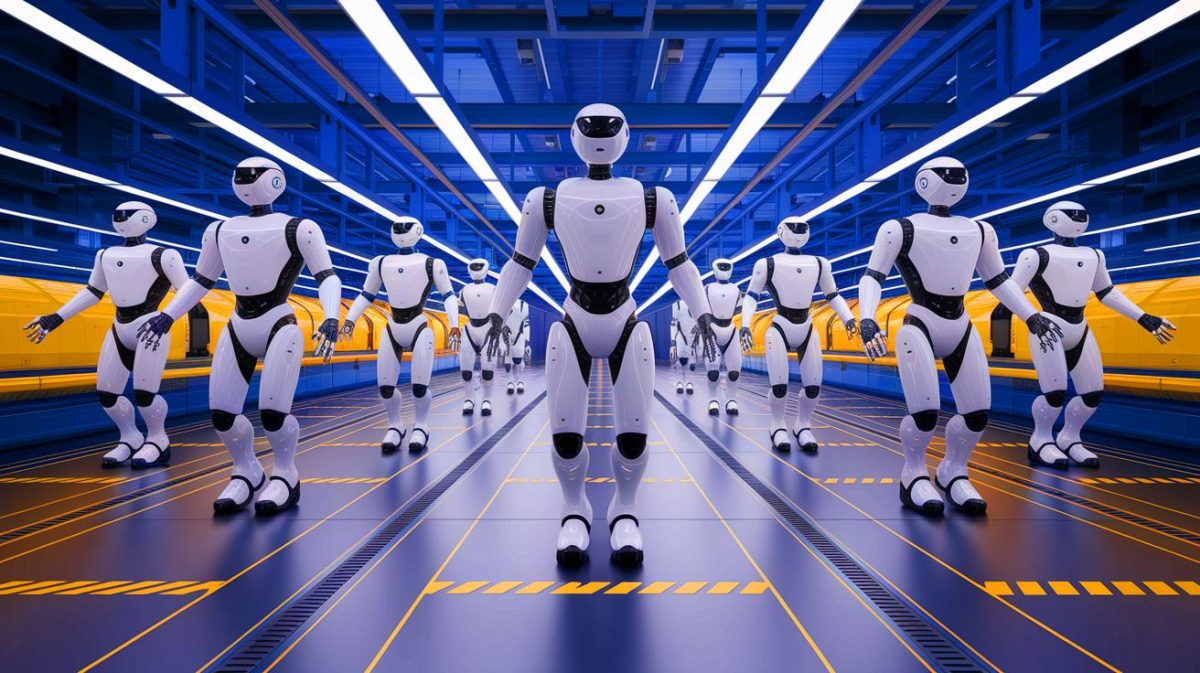| IN A NUTSHELL |
|
In a groundbreaking development, Chinese robotics firm UBTech has taken a significant leap forward in industrial automation with its humanoid robots. At the heart of this innovation is the Walker S1 robot, which has completed the world’s first collaborative training involving multiple robots, tasks, and scenarios in a dynamic environment. This milestone was achieved at Zeekr’s 5G smart factory in Zhejiang province, China, marking a new era in factory intelligence and automation. As industries worldwide seek to enhance efficiency and productivity, UBTech’s advancements offer a glimpse into the future of manufacturing and beyond.
Factory Intelligence Unleashed
UBTech’s revolutionary BrainNet AI framework has set a new standard in industrial automation, enabling the Walker S1 humanoid robot to excel in complex factory tasks. This advanced system, recently deployed at Zeekr’s state-of-the-art 5G smart factory, showcased the world’s first multi-robot, multi-task, and multi-scenario collaborative training in an industrial context. The BrainNet framework integrates cloud-device inference and skill nodes to create a Swarm Intelligence system, featuring a central “super brain” and distributed “intelligent sub-brains.” This setup allows for enhanced decision-making and efficiency.
The super brain employs a large, multimodal reasoning model to handle intricate production-line decisions, while the sub-brain, built on a Transformer model, manages multi-robot control and cross-field sensory integration. This distributed learning system accelerates task training and skill transfer among robots, thanks to the DeepSeek-R1 deep reasoning technology. By processing large-scale data for human-like reasoning, Walker S1 robots can autonomously schedule, decompose, and coordinate tasks, improving adaptability and scalability across various industrial applications.
Humanoids Enter Factories
As China pushes for broader adoption of intelligent automation, UBTech is expanding its factory robot deployment in collaboration with the Midea Group. This strategic partnership aims to integrate humanoid robots into various sectors, including automobile manufacturing and commercial hospitality. UBTech has secured a buyer for a “small batch” of its bipedal humanoid robots—Walker S1 and Walker C—signifying a key step in the commercial rollout of these advanced machines. Reports suggest that Dongfeng Liuqi Motor plans to purchase at least 20 Walker S1 units, marking a significant milestone in the operational deployment of these robots.
The introduction of humanoid robots into factories represents a transformative shift in manufacturing. Walker S1 robots are designed to operate in critical production areas, performing tasks such as collaborative sorting, handling, and precision assembly. Their swarm intelligence system integrates advanced navigation and decision-making capabilities, allowing them to adapt to dynamic environments. This adaptability, combined with vision-based perception and force-based adjustments, ensures precise evaluations and high-quality inspections.
Revolutionizing Production Lines
The deployment of Walker S1 robots at Zeekr’s factory highlights their potential to revolutionize production lines. These robots operate in key areas such as final assembly, instrumentation, inspection, and vehicle assembly, where their hybrid decision-making capabilities are invaluable. They utilize vision-based global positioning and reinforcement learning to ensure precise and adaptive evaluations. In precision assembly, the robots manipulate deformable materials using high-precision sensors and adaptive control, preventing damage and ensuring quality.
The joint planning system of Walker S1 supports collaborative handling by adapting to different environments, planning efficient trajectories, and balancing loads. This dynamic adjustment of force and position enables the stable movement of large objects, enhancing the overall efficiency of production lines. By integrating semantic VSLAM navigation and cloud-assisted decision-making, these robots represent a significant advancement in factory intelligence and automation, paving the way for smarter, more efficient manufacturing processes.
The Future of Humanoid Robotics
With over a decade of exploration behind them, UBTech is poised to enter a new phase of development, with more than 500 Walker S1 units in the pipeline as intended orders. The commercial rollout of these humanoid robots is expected to transform various sectors, from automobile manufacturing to commercial hospitality. As these robots become more prevalent, they will redefine the landscape of intelligent automation, offering unprecedented levels of efficiency and productivity.
UBTech’s advancements in humanoid robotics underscore the potential of AI-driven automation in reshaping industries worldwide. As the company’s Walker S series continues to undergo trials at facilities of major companies like Geely, BYD, Foxconn, and SF Express, the future of automation looks increasingly promising. With the rapid pace of technological innovation, how will industries adapt to this new era of humanoid robotics, and what challenges and opportunities will arise in the quest for smarter, more efficient production systems?
Did you like it? 4.4/5 (30)








Wow, c’est incroyable! Est-ce que ça veut dire que bientôt on aura des robots qui feront tout à notre place? 🤖
Les robots vont-ils vraiment pouvoir remplacer les travailleurs humains dans les usines? Ça me semble un peu utopique.
Bravo UBTech! C’est passionnant de voir comment la technologie progresse! 🚀
J’espère qu’ils ont bien sécurisé tout ça. On ne voudrait pas que les robots prennent le contrôle. 😅
Ces robots pourraient-ils être utilisés dans d’autres industries, comme la santé ou l’éducation?
Je suis sceptique… Les robots peuvent-ils vraiment être aussi efficaces que les humains dans des tâches complexes?
Merci pour cet article fascinant! Je suis curieux de voir où cela va nous mener dans le futur. 🌟
Est-ce que quelqu’un sait combien coûte un de ces robots Walker S1? 💰
C’est un grand pas pour la Chine dans le domaine de la robotique. Quelle sera la prochaine étape?